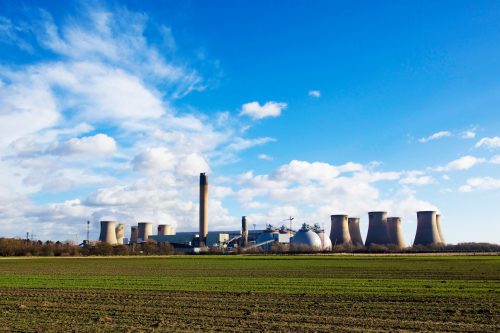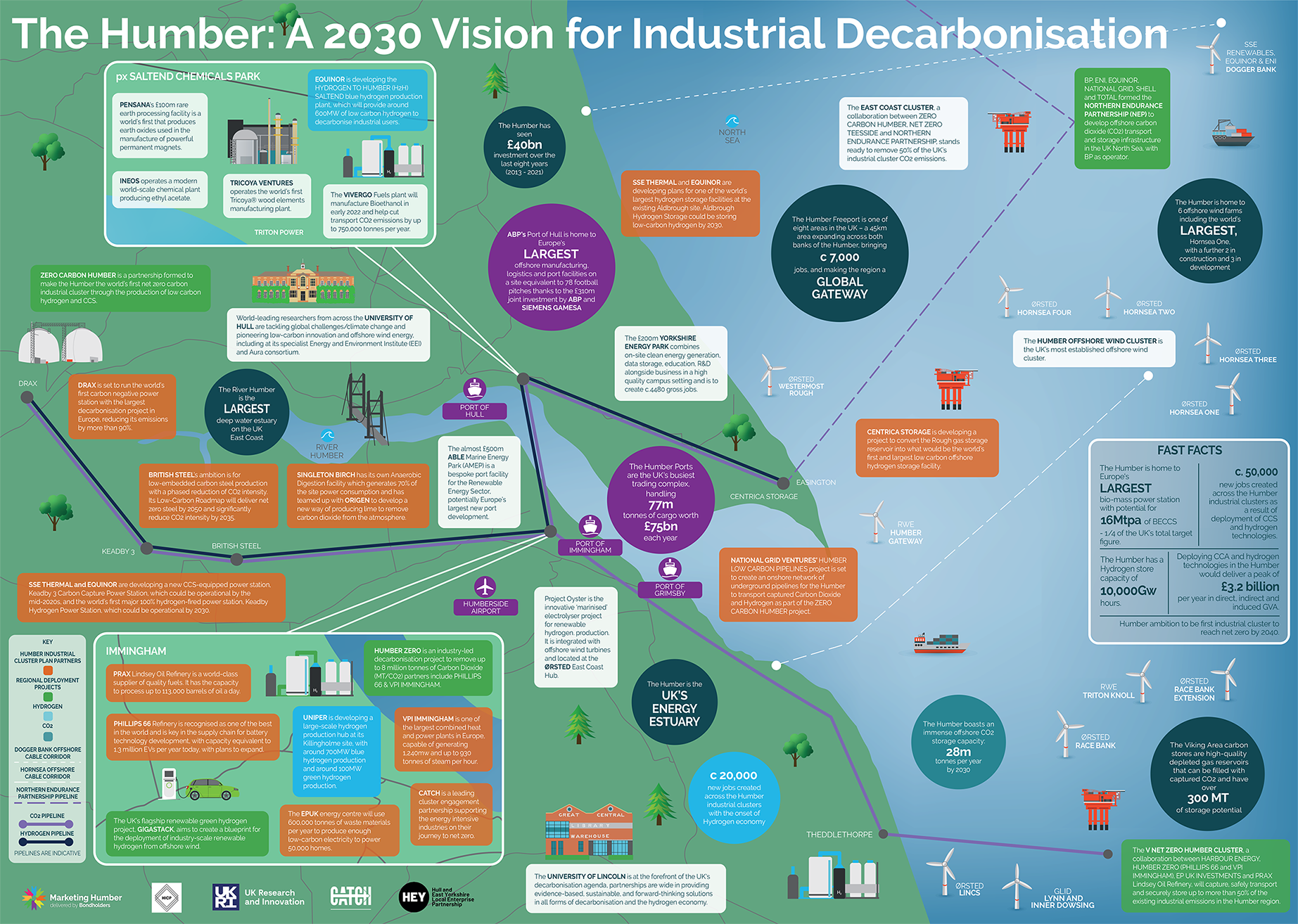Humber 2030 Vision lists £15b investment in decarbonisation and energy plan

The Humber Energy Board today launched a plan to decarbonise and revitalise the Humber area with £15 billion of private investment.
Humber 2030 Vision lays out steps to cut up to 80% the area’s carbon emissions. Along with Teeside, the Humber area currently accounts for half the UK’s C02 emissions.
The project has numerous public and private partners, including Hull City, East Riding and North Lincolnshire Councils; the Universities of Lincoln and Hull; the CBI and a number of energy and manufacturing companies. The document draws existing and future projects into a unified strategy.
Speaking at the Waterline Summit, where the vision was launched, Dr Diana Taylor, managing director of Marketing Humber and a board member the Humber and East Yorkshire LEP, said, “We’ve been the catalyst to raise awareness of the challenges and opportunities for the Humber, as the biggest emitter of CO2 in the UK, and alongside our academic and industrial partners, we’ve put the region on the global stage to lead the transition to a net zero future.
“We’ve shared knowledge and ideas to help position the Humber as a world leader in the climate change challenge. Now, the focus must be on action and implementation, as there can be no delay.
“We are leading in innovative technology and building expertise to achieve our aims and now, after four years of The Waterline Summit, the Humber has a shared vision.”
The 32-page vision booklet points out that 80% of the UK’s currently licensed CO2 storage capacity is accessible from the Humber, enough to capture its emissions for the next 46 years.
It says the region can produce 30% of the government’s hydrogen production targets and half the UK’s renewable electricity by 2030.
The report notes, “The Humber presents the UK’s biggest decarbonisation opportunity, providing world-leading infrastructure and investment, alongside innovation and technology that can be replicated around the world.
“Quite simply, the UK can’t achieve net zero and grow the economy without decarbonising the Humber.”
In his foreword, CBI director-general Tony Danker wrote, “It’s a win-win for jobs and growth. It will help maintain the viability of traditional industry sectors and, at the same time, create new jobs in innovative, green technologies.
“And, critically for us, it’s a blueprint for fostering economic clusters in the UK – a demonstrator that the CBI wants to champion and learn from in equal measure as the best way to bring private sector leadership to bear on levelling up.”
The vision document sets out 18 proposals to take the Humber to net zero emissions, including the Humber low carbon pipelines, Prax Lindsey oil refinery carbon capture, the Immingham Green Energy Terminal and Drax’s bioenergy with carbon capture and storage (BECCS) project.

An infographic showing key elements of the Humber 2030 Vision by the Humber Industrial Cluster Plan.








